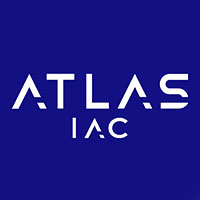ith the recent high profile instances of gaming operators failing
to safeguard their customers, we asked five experts from all corners
of the gambling sector if the current media hullabaloo around player
protection is warranted.
The accepted mantra of the gambler has always been: the greater the risk the greater the reward. However, there will always be some who are prepared to expose themselves to potentially huge losses, and damage themselves and those around them.
The move to online and mobile gaming has made identifying potential problem gambling more difficult. Data can be tracked and analysed, but there is no definitively successful method to identify an online gambler with a potential gambling addiction. A more invasive approach to collecting player data would potentially provide more identification opportunities but increasingly prohibitive data collection and storage laws are liable to prevent this.
Much of the emphasis in the gambling industry, particularly over the past few years has been on self-exclusion programmes, by which gamblers can voluntarily exclude themselves from gambling websites, but as the recent investigation and subsequent fine given to 888 holdings by the UK gambling commission has shown, these deterrents are not infallible.
Regulators, particularly those in Europe, are instituting consumer protection standards surrounding problem gambling and fining defaulters, but is the gambling industry as a whole doing enough to protect its lifeblood, the players?
Graham Weir - Group Director Responsible Gambling, Ladbrokes Coral
“We would be foolish to think that because we are doing 'stuff' that we can stop thinking about the issue”
Every operator is now awake to their requirements to help protect customers from harmful play. For some, the journey began earlier than others. The Gambling Commission have outlined what they expect, but expect that to evolve further, as we learn more about the impact of our activities.
The requirement to manage expectations, both internally and externally is something that is critical to the successful development of systems that might ultimately make a difference. Commercial teams need to know that our systems won't have too many false positives, while external stakeholders want to see clear evidence that we can spot harmful behaviour, interact with the customer and help them to moderate their behaviour.
With both groups, expectations are high from the outset. Understanding and appreciating that the work being done at the moment is essentially in its infancy provides some context.
We might think that what we are doing now is cutting edge and groundbreaking, but time will demonstrate that we have much to learn, not just about the systems themselves, but the nature of communications we use.
Understanding what to say and how we say it with best effect to a customer experiencing harm is an enormous task. We would be foolish to think that because we are doing “stuff” that we can stop thinking about the issue.
At best, we might consider our current systems to be the equivalent of a 1960s Ford Cortina in terms of safety. Back then it seemed enough to be able to stop (eventually) and if you happened to have a couple of seat belts for the front seats, then the occupants might not fly through the windscreen when you didn't quite manage to stop in time.
Never mind the kids rolling about on the back seat! Compare that 1960s car with one rolling off the production line today and you might appreciate how far we need to travel.
So it's a journey. It's vitally important however that we progress quickly and adopt a continuous improvement model. Progress will be made more effectively if we work collaboratively, sharing best practice along the way across the industry. Smart operators understand that there are commercial advantages from looking after your customers and stopping them from ever falling into bad habits.
Are we doing enough? Probably just. Can we, and should we be doing more? Absolutely!
Christine Reilly - Senior Research Director, National Center for Responsible Gaming
“It’s important to remember that interventions - no matter how well intentioned - can help, do nothing or harm the individual”
The question assumes that the gambling industry is solely responsible for protecting customers. However, as argued by the Reno Model, all stakeholders have a measure of responsibility for responsible gambling: consumers, health service and other welfare providers, interested community groups, and governments and their related agencies, such as gaming regulators.
All play a different role with clearly defined parameters. For example, while it is the responsibility of a gambling operator to post a helpline number in the casino, it is the responsibility of treatment providers to identify and assist disordered gamblers.
Nonetheless, the responsibility of the gambling industry is large and the response has been robust. It is nearly universal for gambling operators to post helpline numbers, to provide literature on responsible gaming, to operate a self-exclusion program and to educate employees about responsible gambling and gambling disorder. Responsible gambling programs should stress transparency and help players be informed consumers.
Examples are pamphlets on understanding the odds and how slot machines work as well as tutorials on video game machines that require a measure of skill. In addition to protecting players from the harms of excessive gambling, responsible gaming programs also protect the underage and in this regard the industry excels.
What would help the industry do a better job is more high quality research on responsible gambling. A recent study of the responsible gambling literature observed that only 29 out of more than 2,000 studies met high academic standards. High quality research is the only way to ensure that a responsible gambling programme is safe and effective. It’s important to remember that interventions - no matter how well intentioned - can help, do nothing or harm the individual.
Only rigorous testing will determine if a programme is working. To improve this situation, several stakeholders need to contribute. Scientists interested in gambling disorder should consider conducting research on responsible gaming. Funders of research should consider making responsible gambling a priority. And gaming regulators should consider implementing only evidence-
based policies and programmes.
Clive Hawkswood - Chairman, Remote Gambling Association
“Next year it seems inevitable that the Gambling Commission will take direct action”
The short answer to this question is ‘no’.
Although that sounds a bit stark, it is self-evidently true because why else would the industry be expending so much time, effort and money in striving to improve the safeguards for, and treatment of, its customers?
In terms of player protection, lots of companies are trialling new initiatives and within the British Gambling Commission it has become something of a mantra to urge operators to share their learnings, both good and bad, with industry colleagues.
In terms of what the industry is seeking to do collectively, there are probably three headline areas:
• The development of national self-exclusion schemes, with, for example the evolution in the UK of GAMSTOP;
• Improved use of analytics to identify problematic behaviour and then, crucially, interact with the identified customers with the aim of returning them to a safer state of play. This cannot be an optional extra if the industry is to avoid the risk of a serious regulatory clampdown. It is not easy, but the recently published PwC report on markers of harm, and also work that is being considered now to evaluate existing interactions and possibly trial additional ones, both present major opportunities for the industry to make big strides forward;
• A review of the approach to marketing.
The UK DCMS review will set the tone, but Ministers have very explicitly said that the status quo is not an option and recent negative publicity about affiliates and breaches of advertising codes have not come at a good time.
Another point that we should not lose sight of is that protecting customers extends beyond protecting them from gambling-related harm. It is also about, topically, providing good complaints-handling processes and ensuring that terms and conditions are fair and appropriate.
On the first of these we have agreed with the Gambling Commission to work on good practice guidelines and on the second we are probably waiting for some conclusive outcomes to emerge from the CMA enquiries, but next year it seems inevitable that the Gambling Commission
will take direct action or, in collaboration with the industry, will seek to find more ways to improve standards generally.
Iain Corby - Deputy Chief Executive, GambleAware
Imagine a world where the first priority of gambling companies was to take great care of their customers’ welfare, from their first bet to their final flutter. New customers were carefully checked to make sure they were not likely to be vulnerable to gambling-related harm, and in some cases, their deposits and stakes were limited, perhaps until they’d learnt good habits and demonstrated their ability to manage their play safely. Staff
and systems were then constantly looking for signs of trouble, applying the latest machine learning technologies online, while investing in training to ensure all retail staff knew the signs, and felt confident and empowered to step in, often simply to check that someone who looked entirely happy was indeed as content as they appeared. No-one would gamble without a clear limit on the time and money they planned to spend, and would be firmly reminded as they approached these limits, and self-exclusion would be 100% effective, industry-wide.
That’s a world where you might persuade me the industry is protecting its players. For now, I can only answer the question – is the industry doing enough to get to that world. And the answer to that it’s not yet, but the signs are there that many operators are now realising this is a
business-critical requirement.
Shareholders are looking nervously at regulatory settlements and fines, while non-executive directors must be asking tougher questions at board meetings, facing the risk of losing a licence completely. The compliance director is now at least getting dates in the diary with the marketing director, but the former still winces at drafts of the ad campaigns and offers the latter is generating.
Is it fast enough? Well whatever the tax revenues, the political mood is not moving in favour of gambling. While B2 machines have acted as shock absorbers during public debates, attention is turning to other forms of gambling – be they faster, more volatile, more accessible or with unlimited stakes. So, not yet enough, not yet changing fast enough, but room for optimism that the industry is beginning to get a stark message – raise your game or risk gambling away not only your reputation but your entire business.
Lauren Devine-Monaghan - Head of Responsible Gaming, Mr Green
“By ensuring your players are entertained by your product and don’t move into a negative pattern, you build a more sustainable business”
Over the last couple of years we have seen a shift in terms of responsible gaming, with more stringent regulations around social responsibility pushing the industry rather than the industry itself.
We are not saying other operators and suppliers do not care about consumer protection, in fact just like us they know they have to. Today, most other operators, as well as suppliers, are developing their own approach towards social responsibility and while there is a lot of work going on in the background, there are just a few which publicly speak around their efforts. This aids the public misconception that the industry is ignoring the need for customer protection.
We strongly believe there is still much more to be done, taking the learnings from experts and research and putting it into practice, continuing to develop the way we communicate with at-risk players and continuing to develop tools to support player protection.
This is why we launched Green Gaming. In collaboration with leading experts in the field of responsible gaming and data modelling, we created a predictive tool that takes in consideration the player’s own perceptions of their playing behaviours as well as real individual player data. This way, our players receive insights and analysis about their gaming presented on their personal dashboard.
Mr Green, in turn, used the insights to individual customers’ risk behaviour to adjust our offering and communication. This means players who exhibit increased risk behaviour may be asked to set different limits or to step back from playing for a period of time.
Mr Green will also refrain from targeting customers with increased risk behaviours. By ensuring your players are entertained by your product and don’t move into a negative pattern, you build a more sustainable business. The natural question is “How do you make sure this does not impact your business in a negative way?” Well, we can’t, and potentially it will, at least in the short term. We are ok with this since we truly believe this will build long-term sustainability as the lifetime value of our players will increase. We are excited about this big green step forward and we look forward to discussing our learnings as we continue to push forward.
Protection racket: Is the noise justified?
W
By Gambling Insider
Premium+ Connections
Premium Connections
Awards
Consultancy
Executive Profiles
Energame
Sportradar
Live! Casino & Hotel Maryland
Mohegan
Mohegan Inspire
Follow Us

































